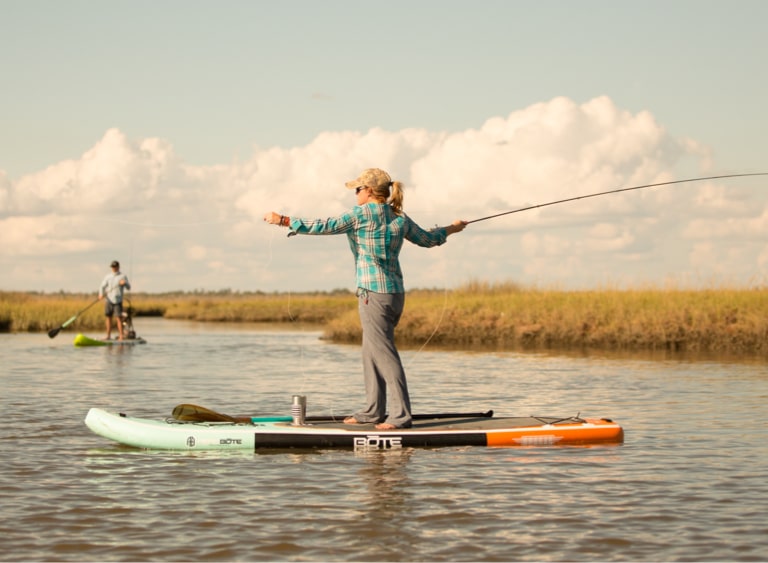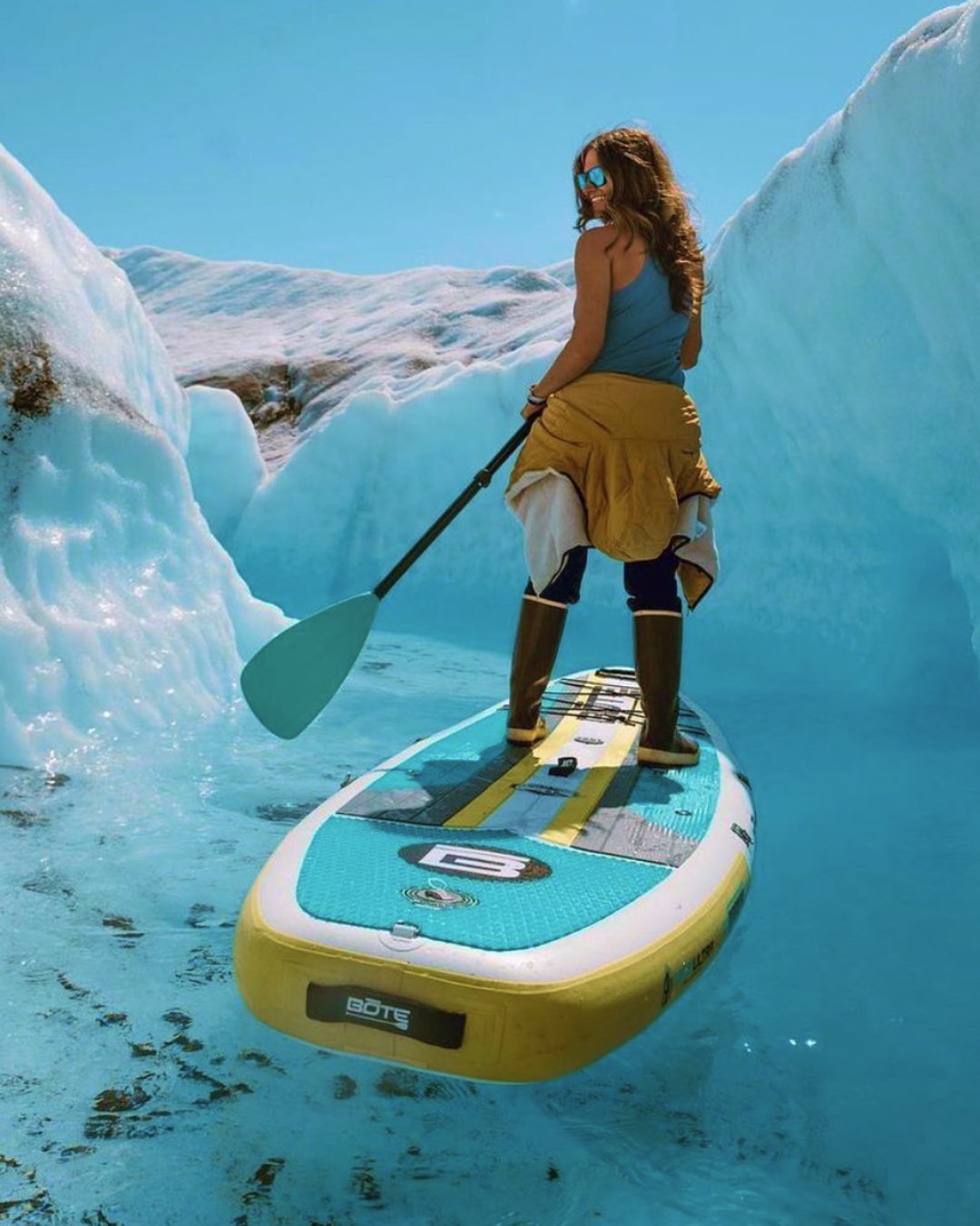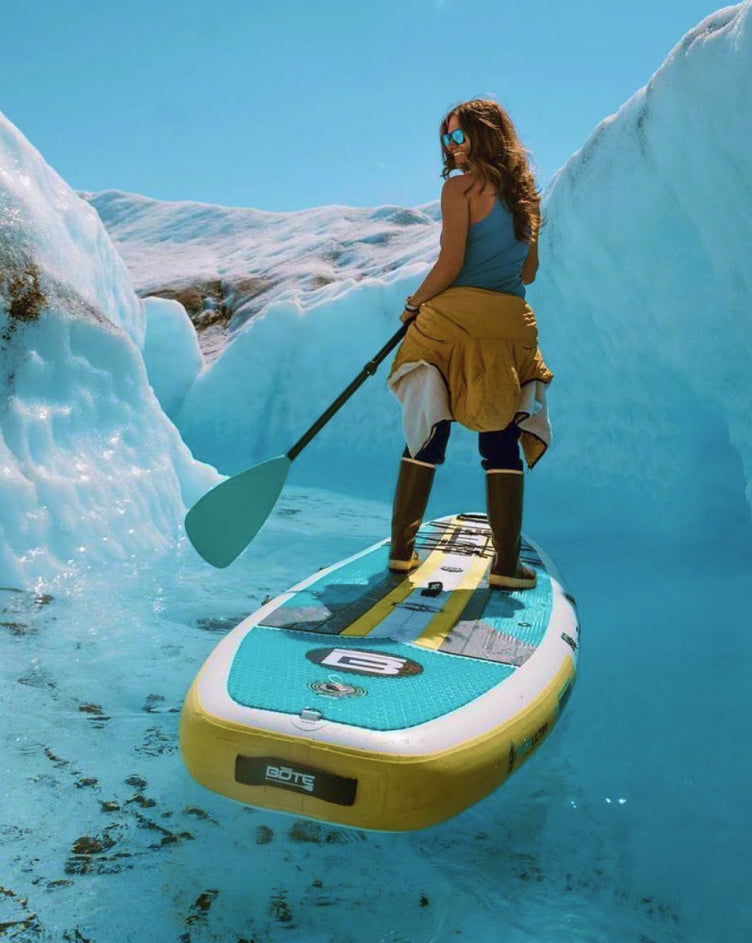What to Wear Stand Up Paddling
Just because it isn’t the stand up paddle equivalent of a bluebird day isn’t a reason to stay home. If getting out on the water is a passion for you but you just need some direction on what to wear to make it a year-round hobby, you’ve come to the right place.
Whether you’re a paddle board fishing enthusiast or SUP yoga pro, your experiences on the water shouldn’t have to stop when summer comes to an end. Good news, it doesn’t have to. All you need is a few essential items to stay comfortable and keep your SUP in the water through all the seasons.

What to Wear Paddle Boarding in Summer
Most of us get our water wings in the summer, when a perfect day is as simple as being on the water from dawn to dusk. But let’s face it, we’ve probably all made the mistake of forgetting a key item or two on a paddle excursion and the aftermath can be gnarly. Did someone order a sunburn?
So whether you’re a SUP beginner or just looking for confirmation on which essentials you may be missing, we’re here with a few key tips to help you dress like a pro.

- An athletic swimsuit. While out on the water you want to be able to focus on your paddle stroke and what’s ahead, not loose strings to a bikini top or sagging shorts. Swimsuits designed for swimming and surfing are ideal for paddle boarding as well. Designed with performance fabrics that help you go the distance, like UPF and quick dry technology, paired with an athletic fit that stays in place, an athletic swimsuit helps you dress the part and go the distance.
- A rash guard. Rash guards can be a game changer, particularly if you alternate between stand up paddling in calm waters and paddle surfing. Not only will a rash guard protect your skin from abrasion against the board and dry quickly, but it also provides a much needed layer of sun protection. A lot of surf brands make women’s swimsuits with a built in rash guard, helping you tick off two essentials in one.
- SPF. We know, this technically isn’t attire, but we consider it our duty to tell you to lather up with SPF before taking your SUP board out. It’s only going to give you peace of mind as you stretch out your days on the water.
- A hat. Hats can be a personal preference, but when the sun is beating down on you for hours during a long distance paddle, there’s no better way to shade your face and keep your head cool. Make sure the hat fits snug to your head and won’t fly away in coastal wind.
- Polarized sunglasses. The difference between paddling with and without polarized sunglasses is wild. And by that we mean: polarized sunglasses are essential. When the glare from the sun bounces off the water it can create a bright, distracting glow. Polarized sunglasses help remove the glare so you have a clear line of sight, free of distraction.
- Water shoes, maybe. In most situations you can paddle without shoes. But if you’re backwater paddling or in areas with brush and debris, water shoes are great to have on hand. When choosing a water shoe, look for a rubber sole to create further traction on the deckpad. And, if you need to use a sandal, choose one with a heel strap so it stays securely on your foot.
“Living in Florida, I paddle half the year in a swimsuit and polarized sunglasses. If I know I’m going to be out for a while, maybe distance paddling in the morning then meeting Corey and the kids at the sandbar for a few hours, I’ll bring a long sleeve UPF shirt and hat to throw on when the sun is high. Both items are easy to secure to the front of the board with bungees and dip in the water to stay cool and protect myself from too much sun exposure.”
- Magda Cooper, Co-Founder

What to Wear Paddle Boarding in Fall and Spring
If you’ve mastered the basics of what to wear stand up paddling in the summer, consider it the baseline for what to wear while stand up paddling in the fall and spring. All you have to do is throw a couple of layers on top of your summer essentials and you’re ready to rock a fall or spring paddle.
- The right layers. It may feel a little crisp at the beginning of your SUP session, but as soon as you get the blood going, you’re going to find yourself warmer than you thought. The key is to wear layers like t-shirts, hoodies, and pants in moisture-wicking performance fabrics or merino wool, which dry quickly and can help regulate your body temperature as the weather changes throughout the day. Notice we didn’t say cotton, because when cotton gets wet it stays wet and doesn’t do anything to help regulate your body temperature.
- A windbreaker. An unexpected gust of wind can really chill you to the bone, and you’re prone to those winds when paddling in fall and springtime, particularly in coastal waters. A windbreaker is a perfect layering piece to protect you from wind and other elements, but it’s lighter than a normal jacket so you won’t feel weighed down.
- Thin neoprene booties. When the water starts hitting temperatures in the low 50’s, it’s going to feel more like a jolt of cold than a refreshing reprieve when your feet get wet. Lightweight neoprene booties are a great option to help keep your feet warm and dry.




What to Wear Paddle Boarding in Winter
If you’re reading up on how to dress for winter paddling, hats off to you. You’re clearly committed to the SUP lifestyle and at BOTE, we’re committed to help you flourish in your badass glory All. Year. Long. Going into a winter paddle, you’ll want to take the attire from fall and spring and elevate it to make sure you stay warm through all your SUP hobbies, from casting and down-dogging to long distance paddling.
- A wetsuit. When the water and air temperatures take a turn for the worst, don’t call it quits before trying out a wetsuit. Wetsuits designed for cold weather surfing work well for stand up paddling and paddle surfing as well. Built for warmth and mobility, the right wetsuit can help keep you warm without compromising your range of motion.
- Thermal layers. If you’re not quite in wetsuit territory, or you’re confident you won’t be swimming, consider thermal and waterproof outerwear. Ideal for the paddle board fishing hobbyist, thermal and waterproof clothes are a great option for the outdoorsman or outdoorswoman who needs protection from wind, rain, and splashes while casting through even the gnarliest weather.
- Thick neoprene booties. No matter the activity, your feet are going to get wet at some point, so thick neoprene booties can help keep the toes toasty during your paddle without weighing you down.
- Neoprene gloves. Frigid cold air can cause your skin to dry up and there’s nothing worse than getting a crack along the knuckle. We’re not babies but a paper-like cut hurts like hell, right? Neoprene gloves keep your hands warm without the bulk, so you can easily grip your paddle and maintain your stride.


Knowing what to wear while stand up paddling across all the seasons you experience near home and on the road can play a key role in continuing to live the SUP lifestyle year-round.
Here at BOTE, we’re year-round paddlers. And contrary to popular belief, it gets f*%king cold in Northwest Florida for at least a few long winter weeks every year. We recognize that winter in Florida is a hell of a lot different than winter in Maine, and some temperatures are too frigid for even the toughest outdoorsman to weather. However, knowing what to wear while stand up paddling across all the seasons you experience near home and on the road can play a key role in continuing to live the SUP lifestyle year-round.
So as the seasons change, consider investing in a few key pieces to round out what’s missing for your local seasons. Take inventory of what you already have, see what you can adapt for SUP attire, invest in a couple key pieces, and meet us on the water this winter.








